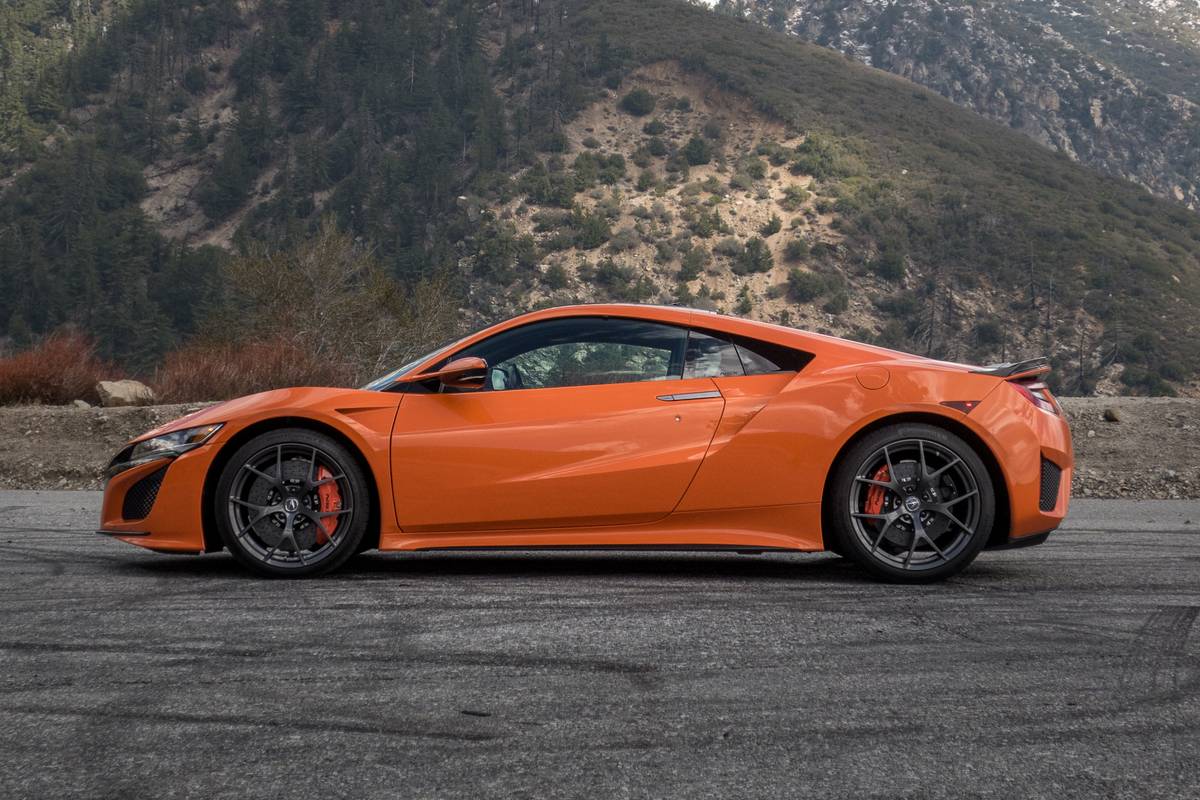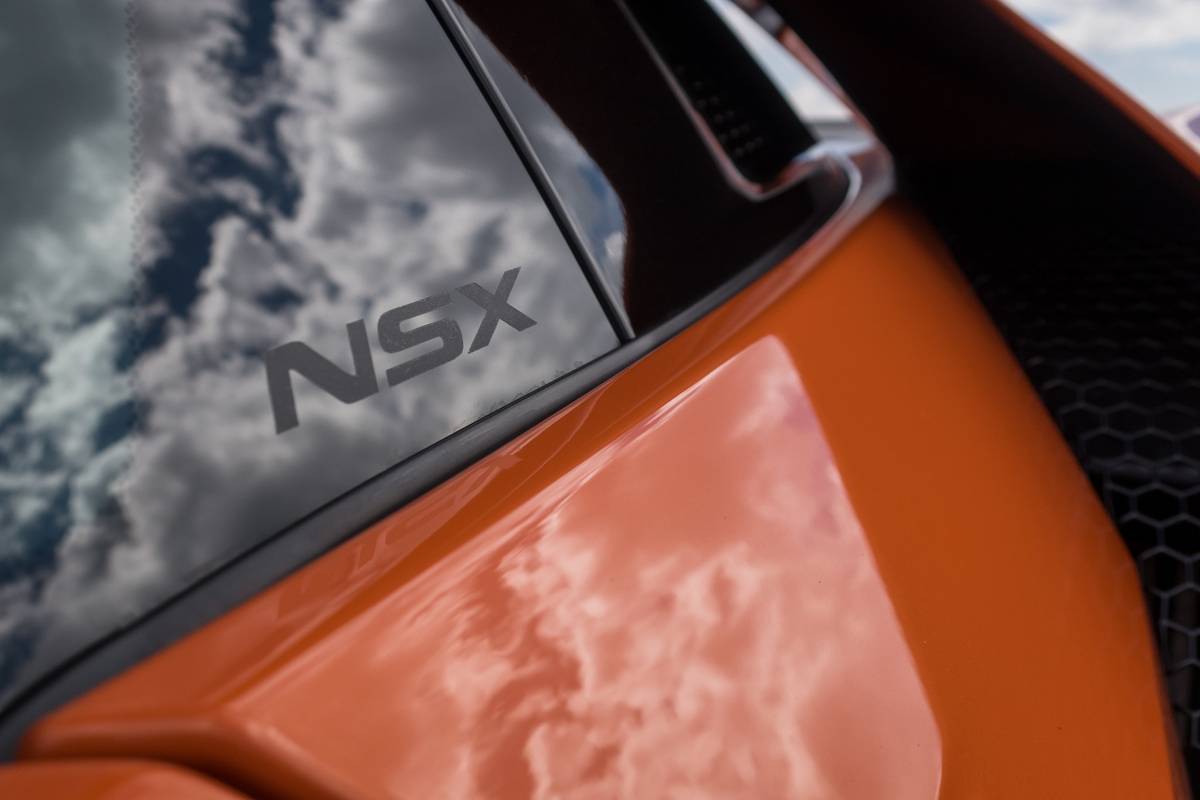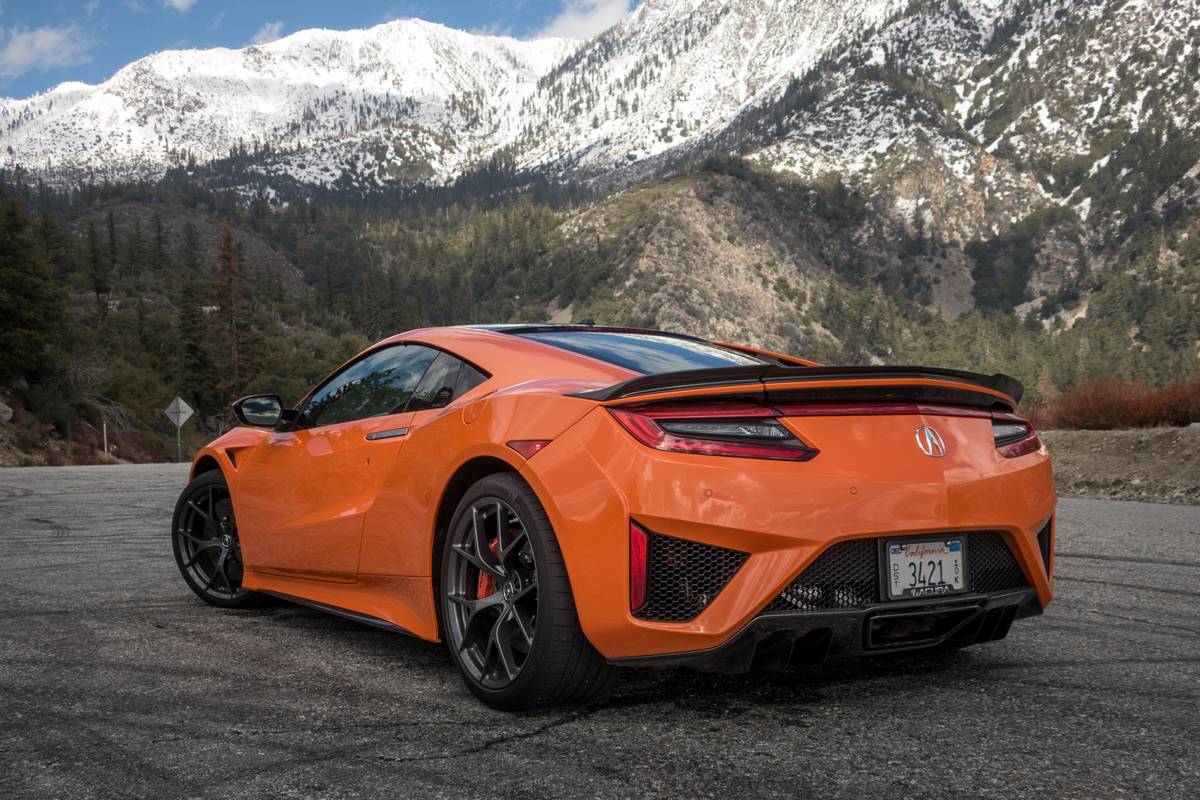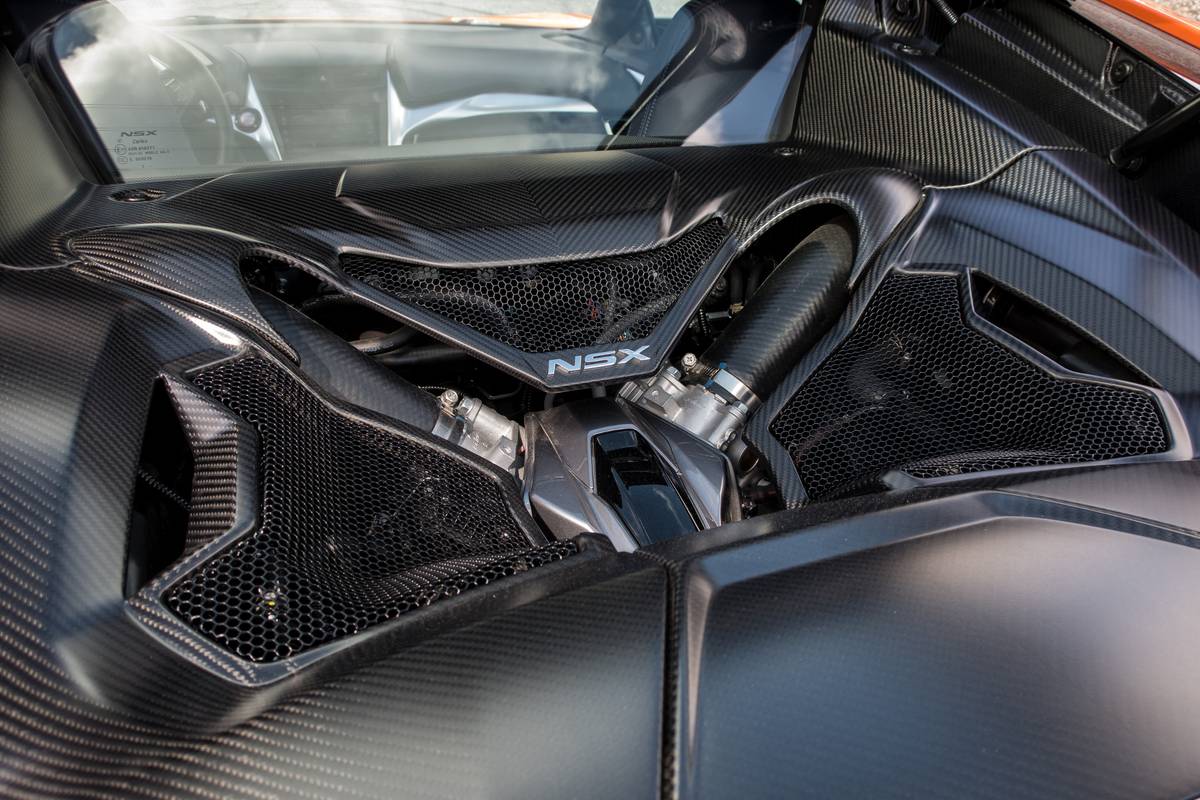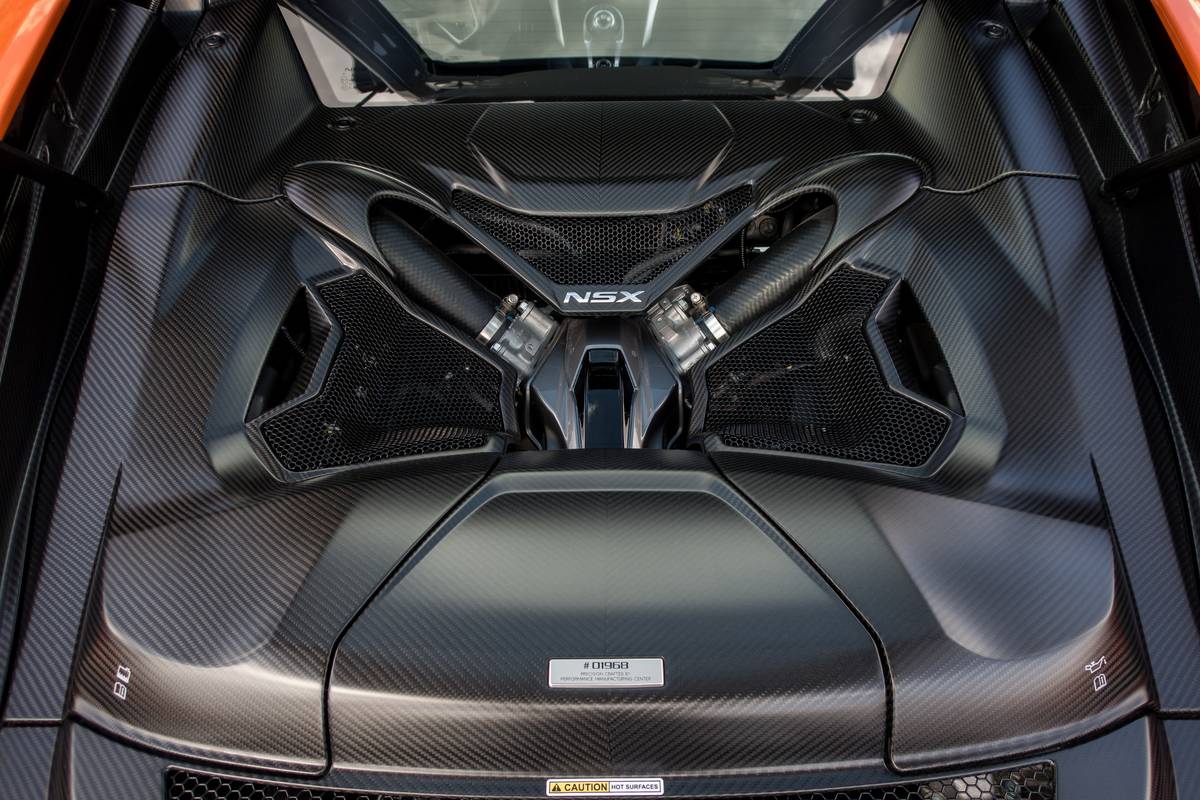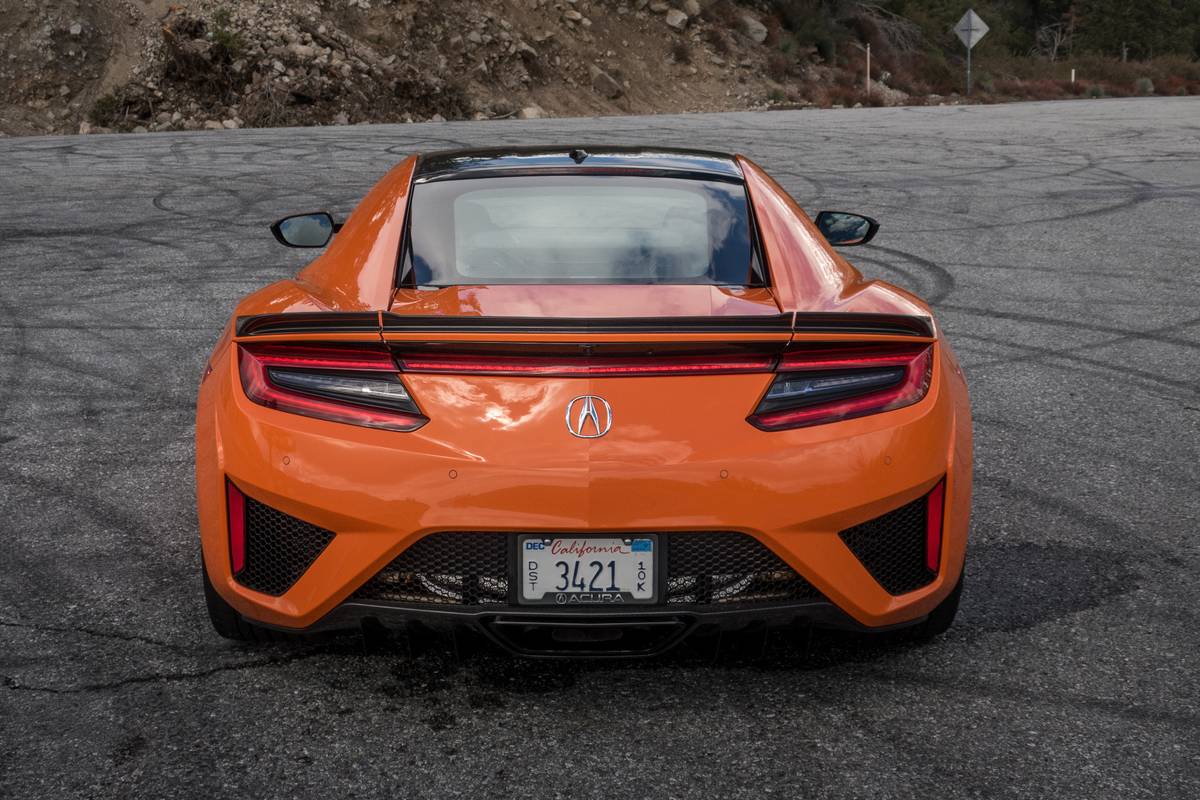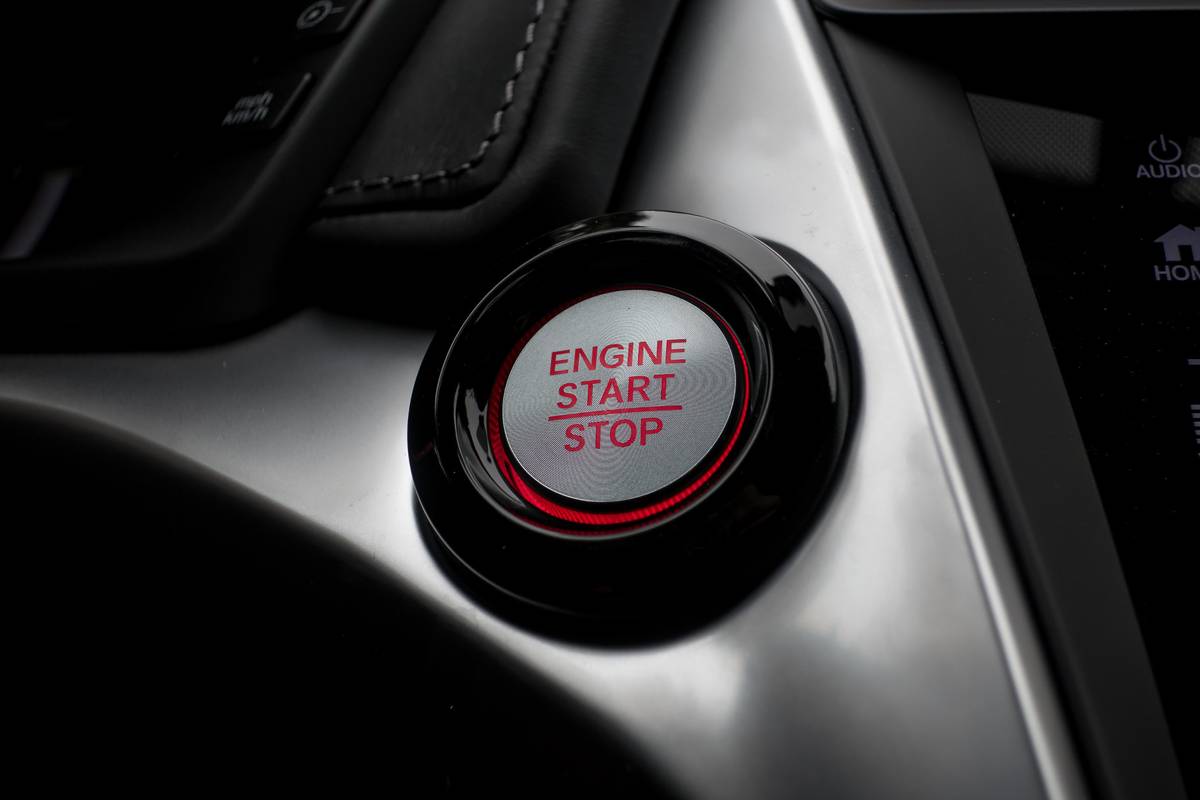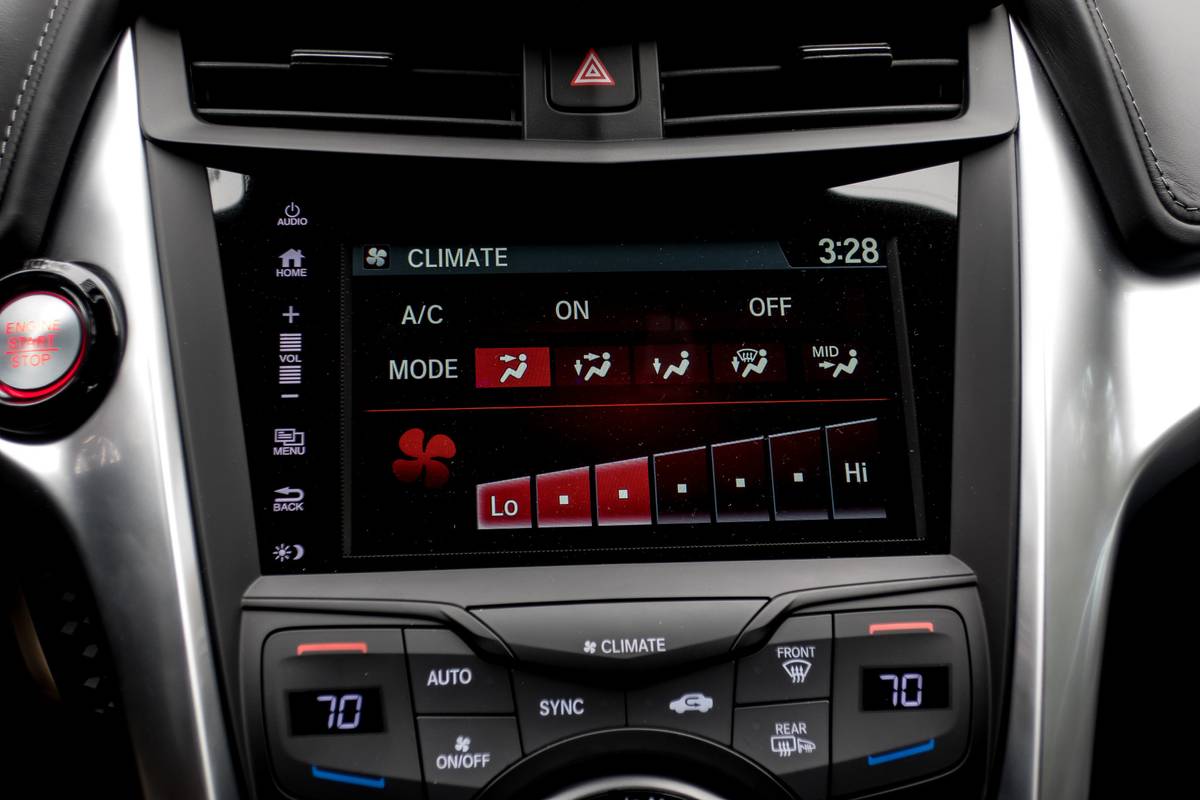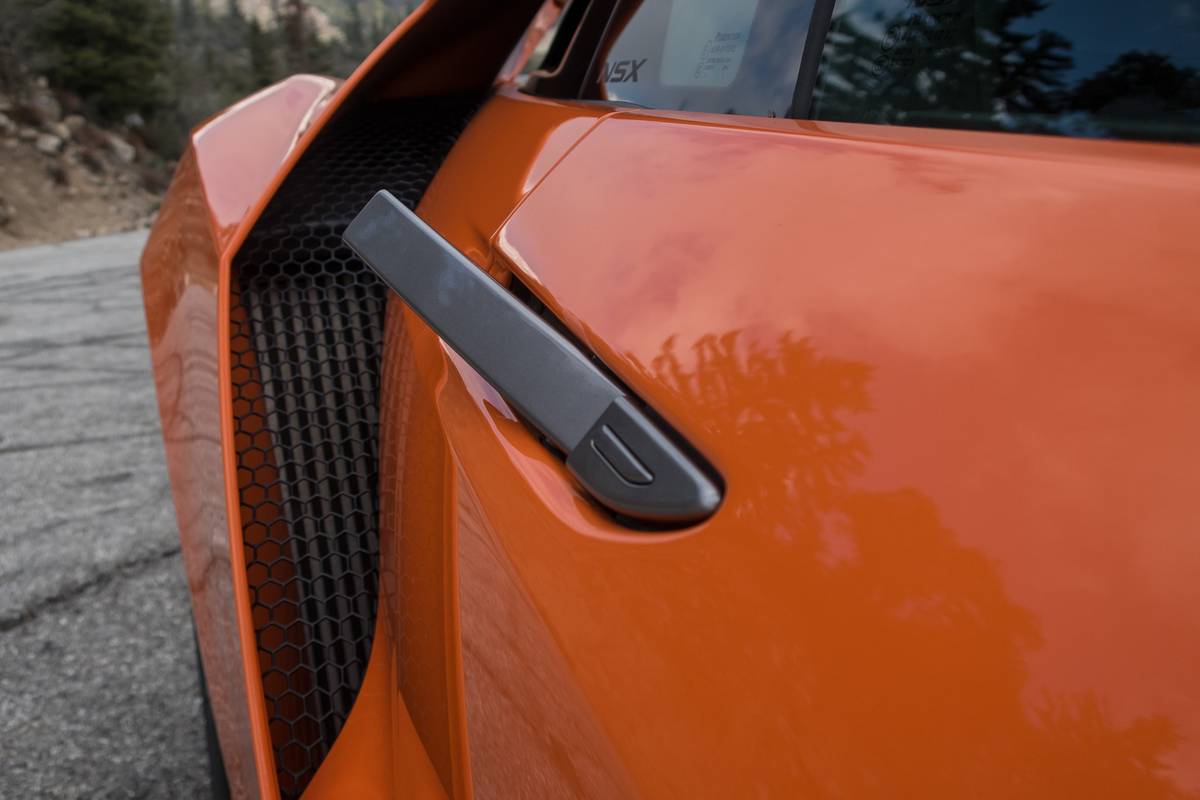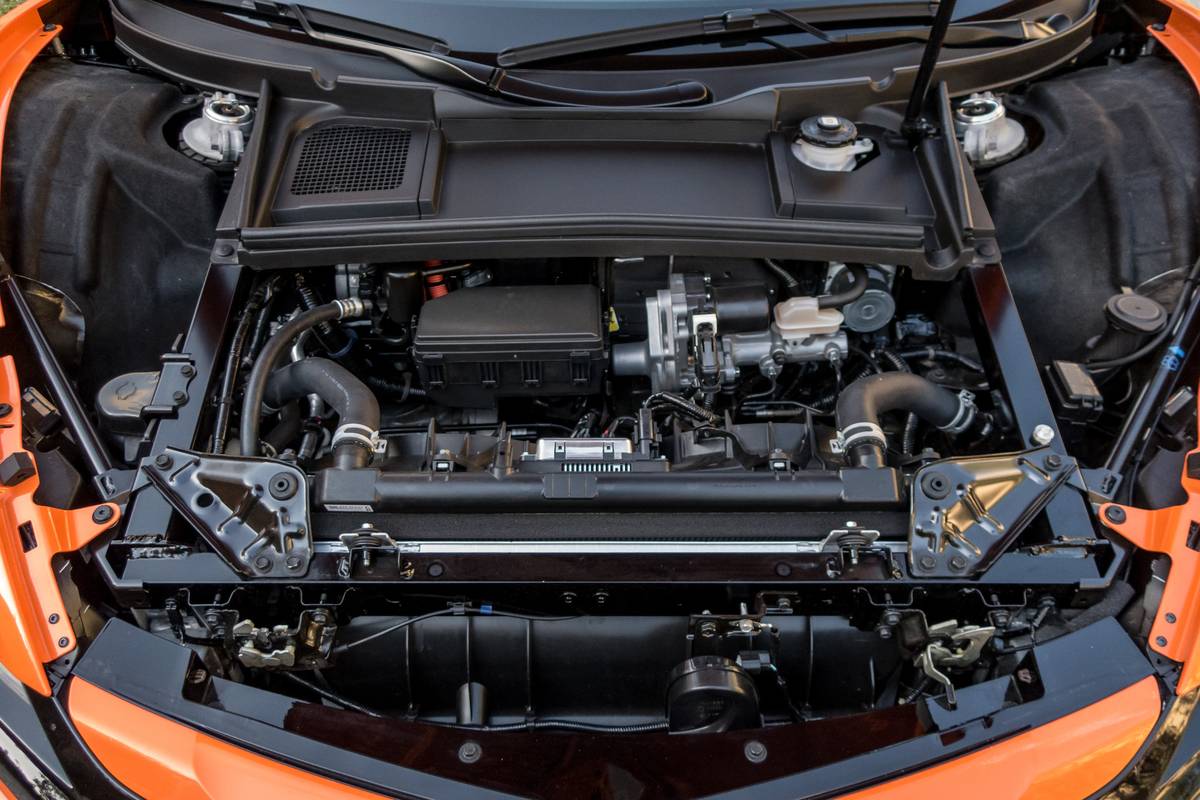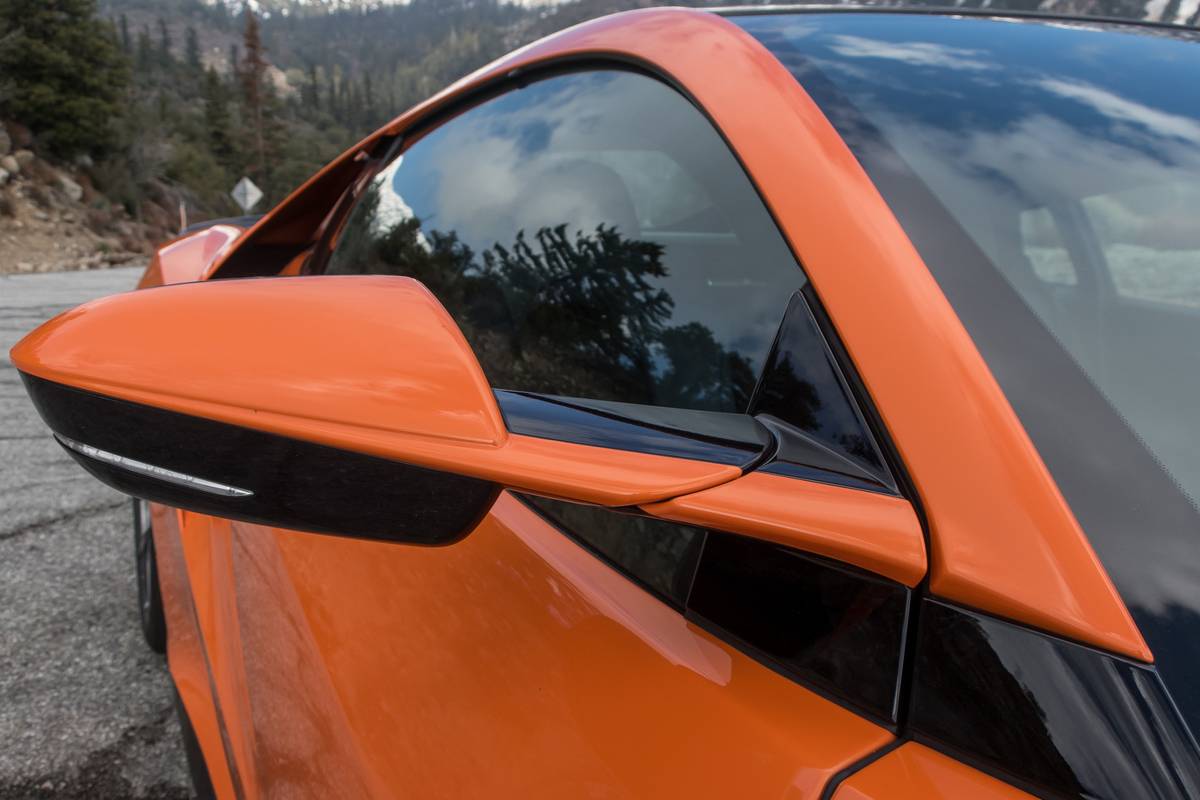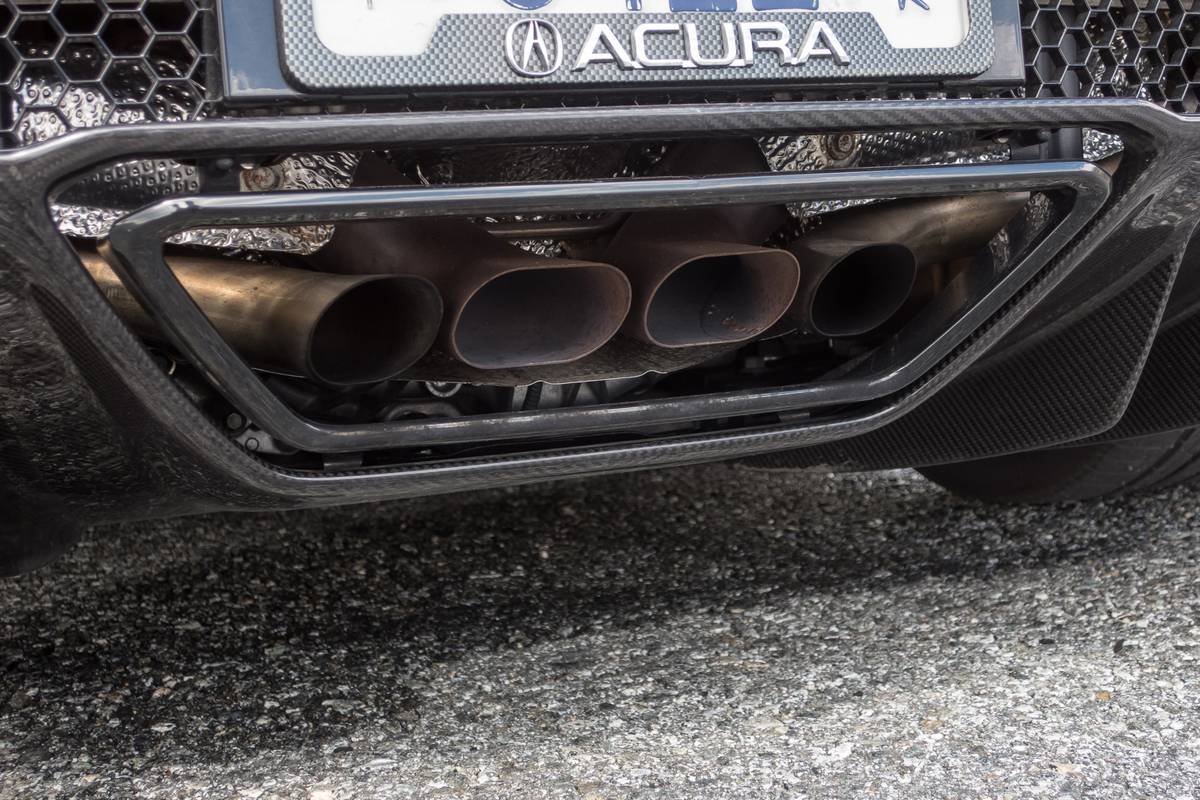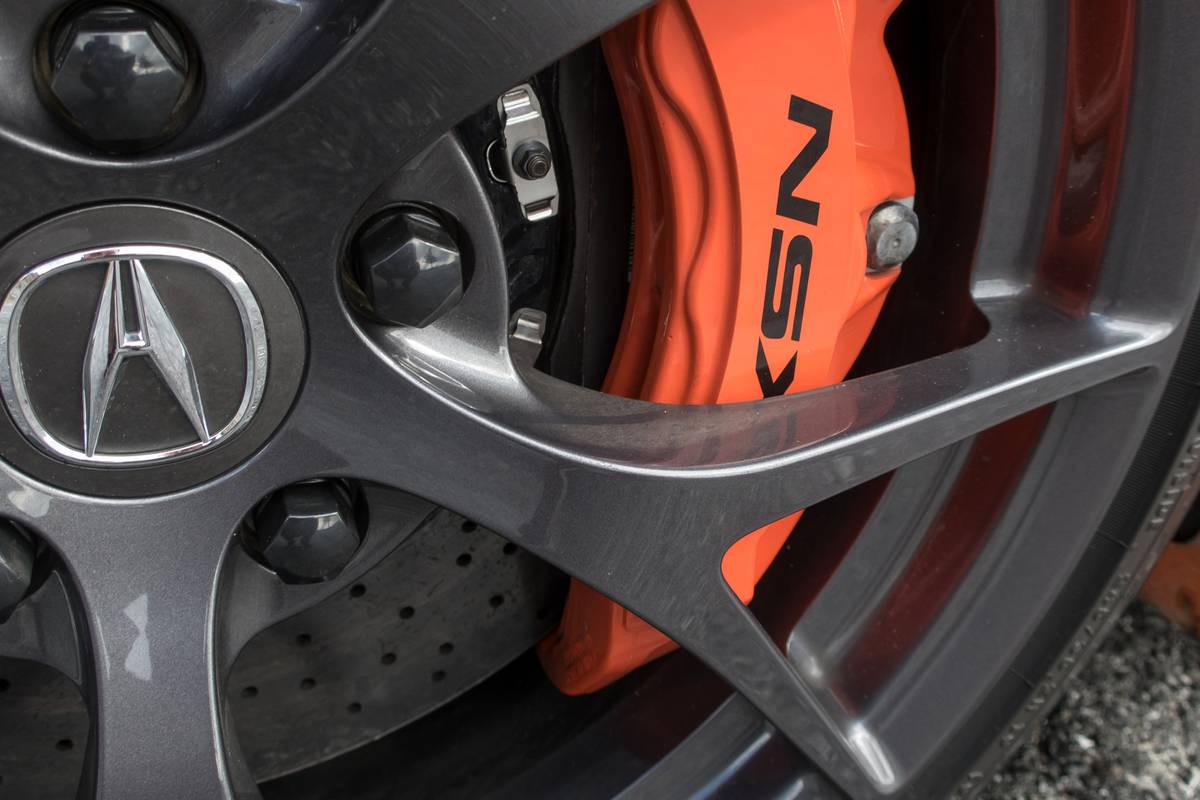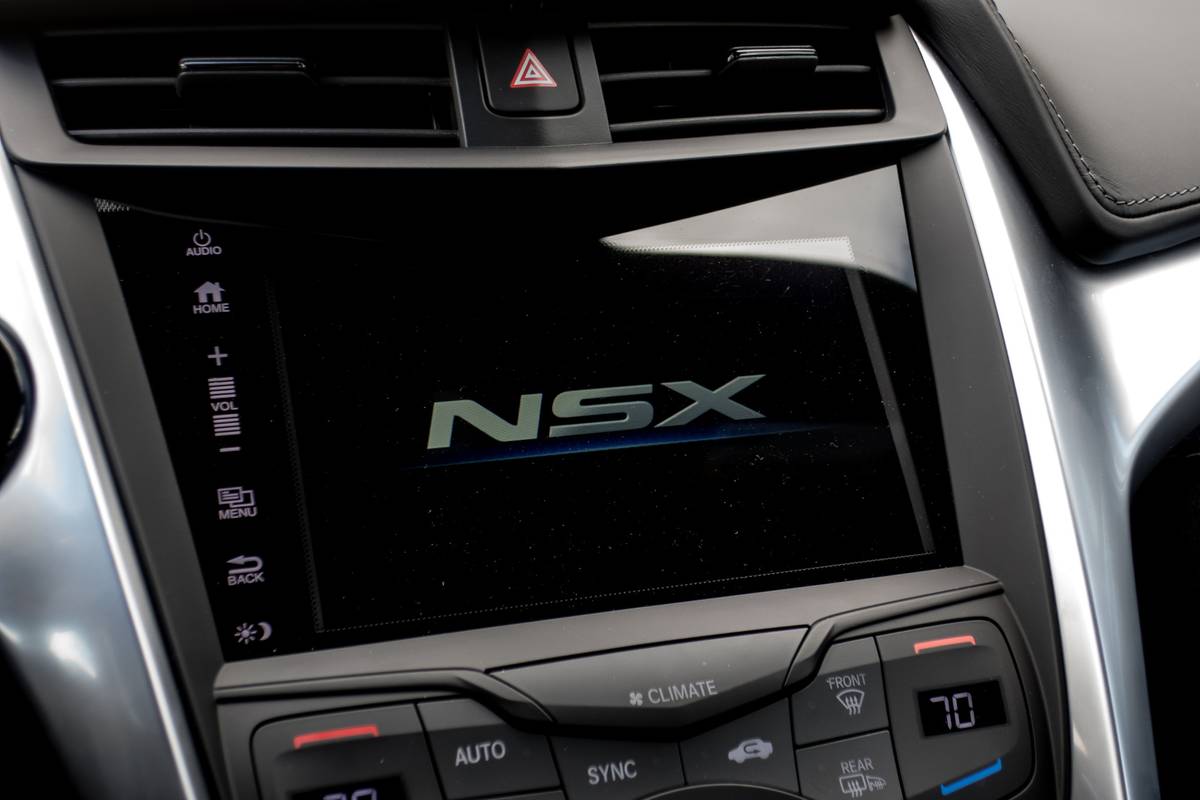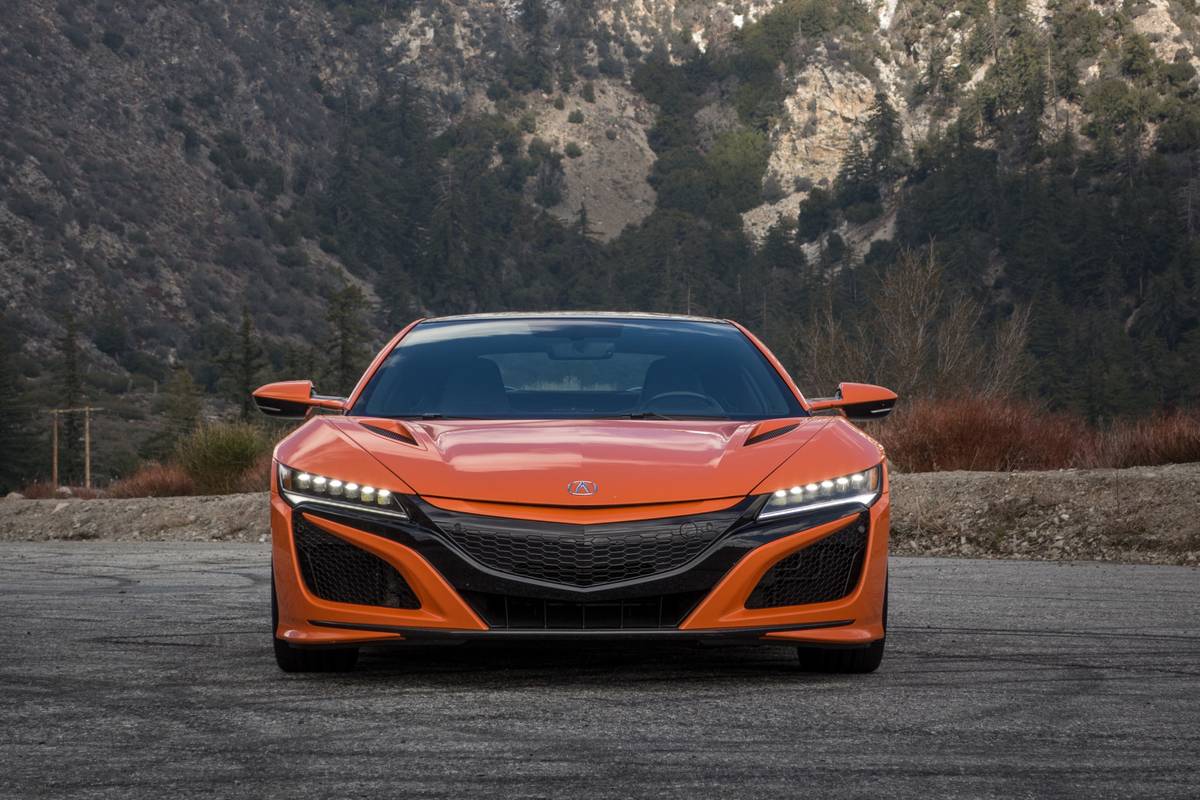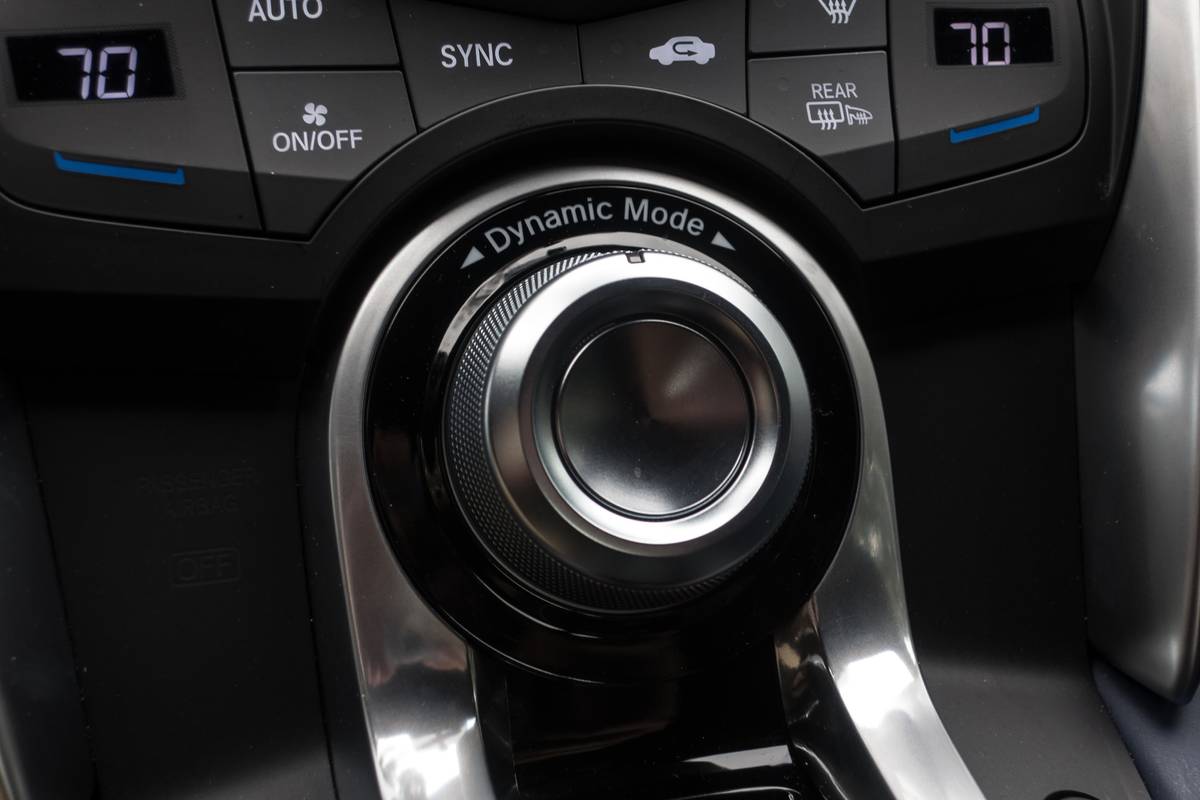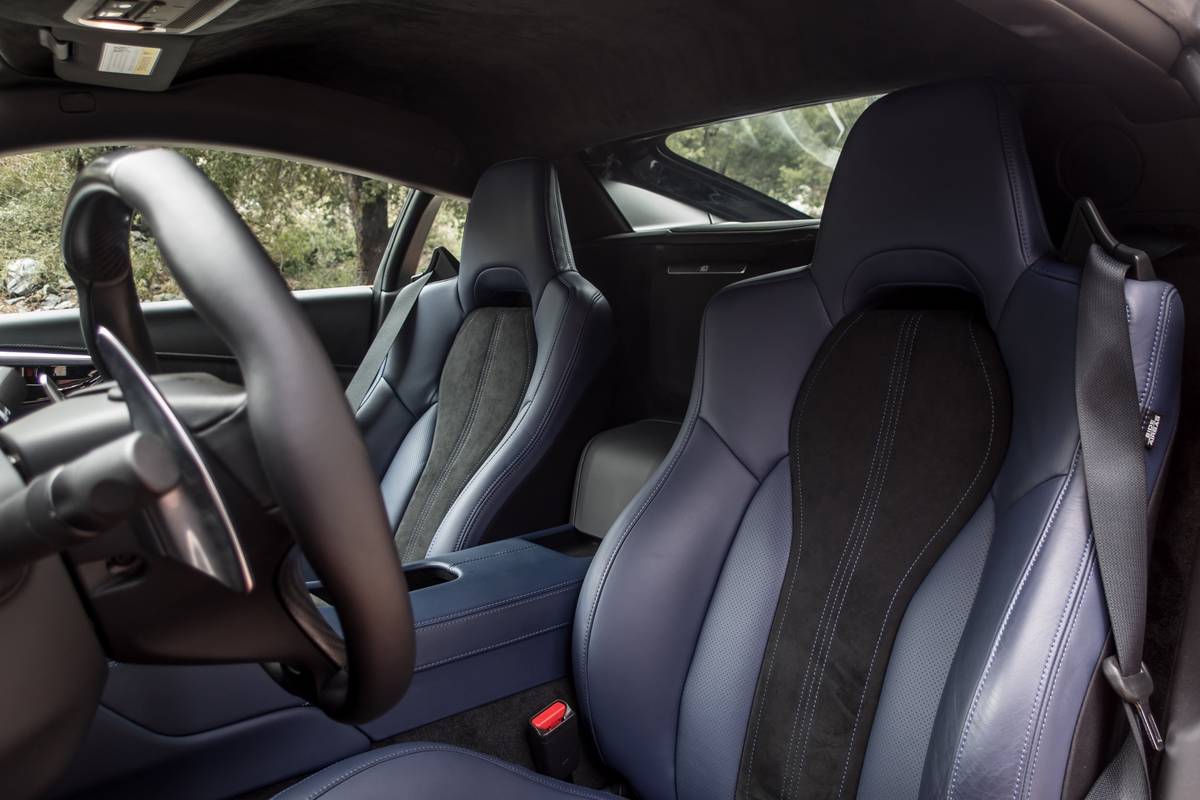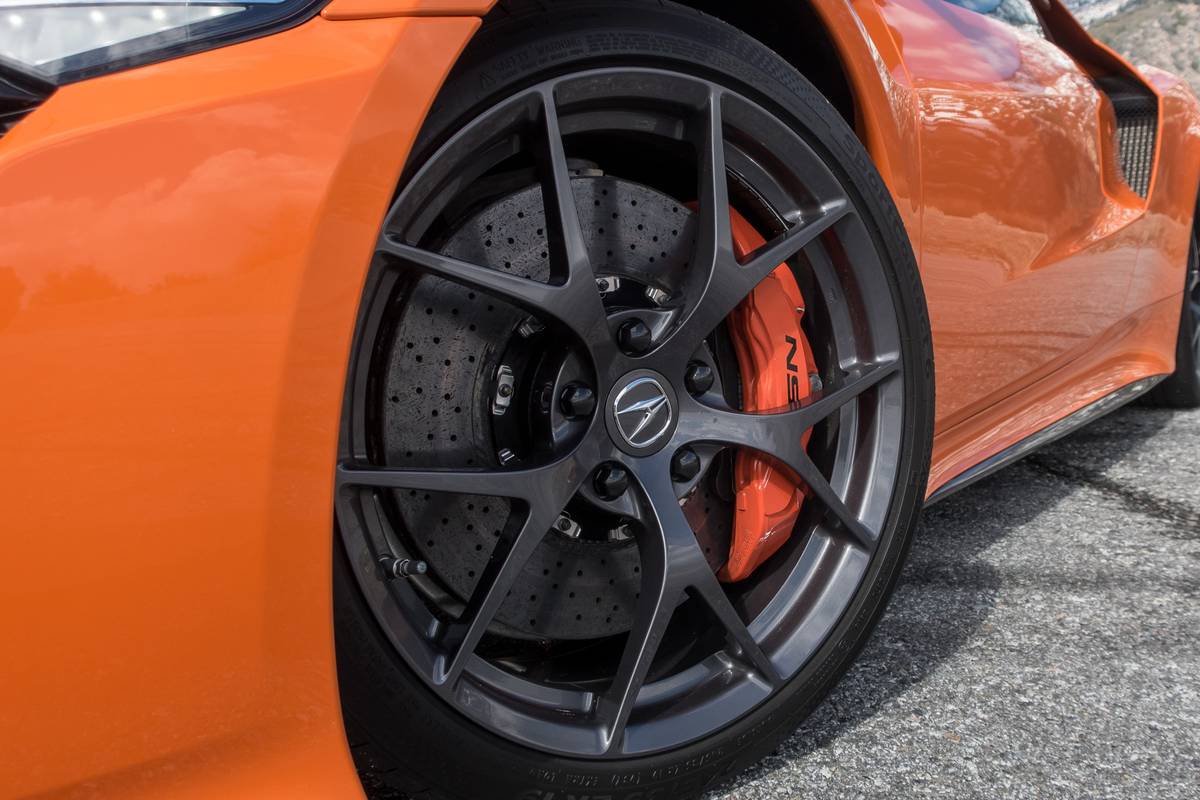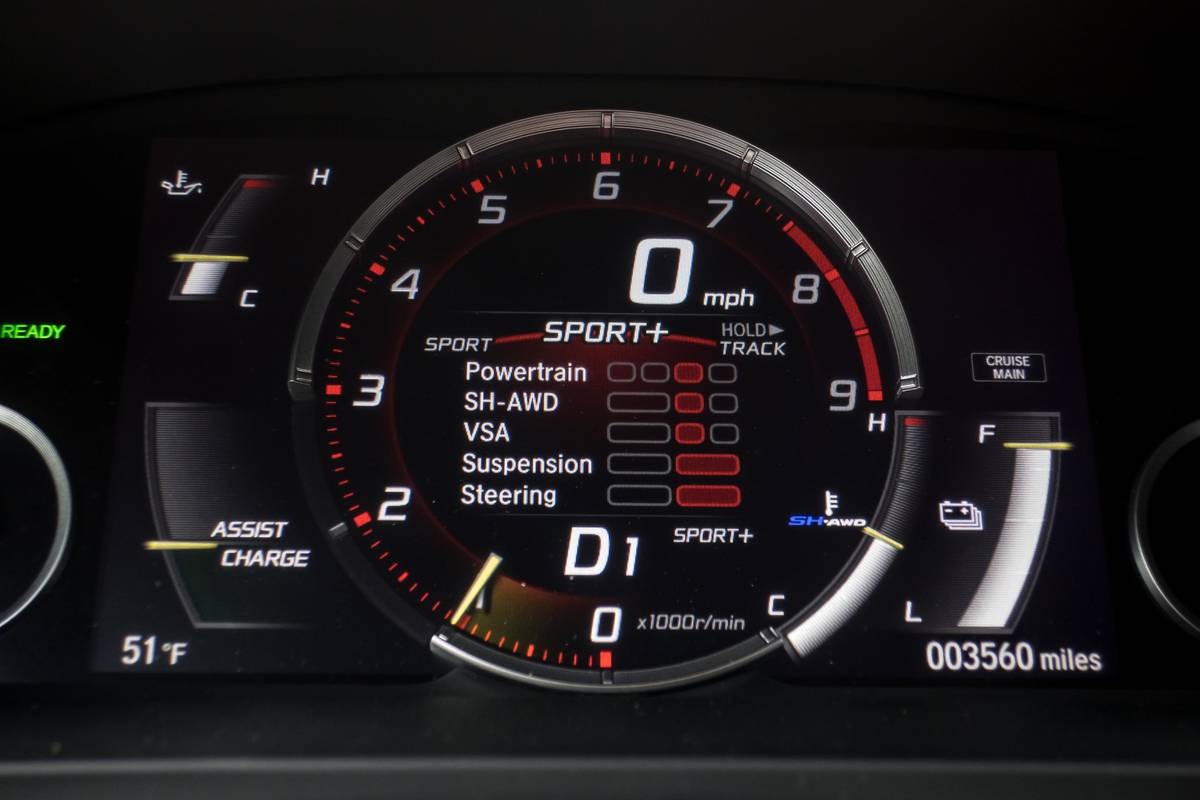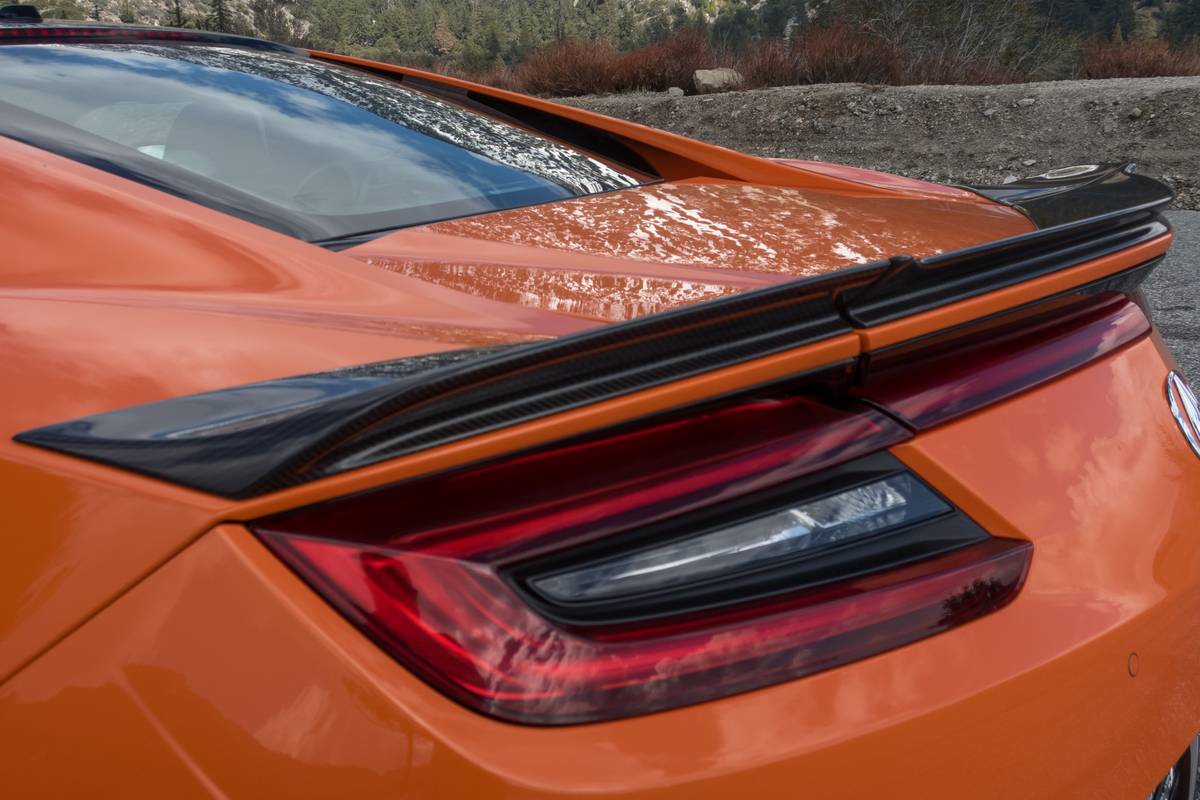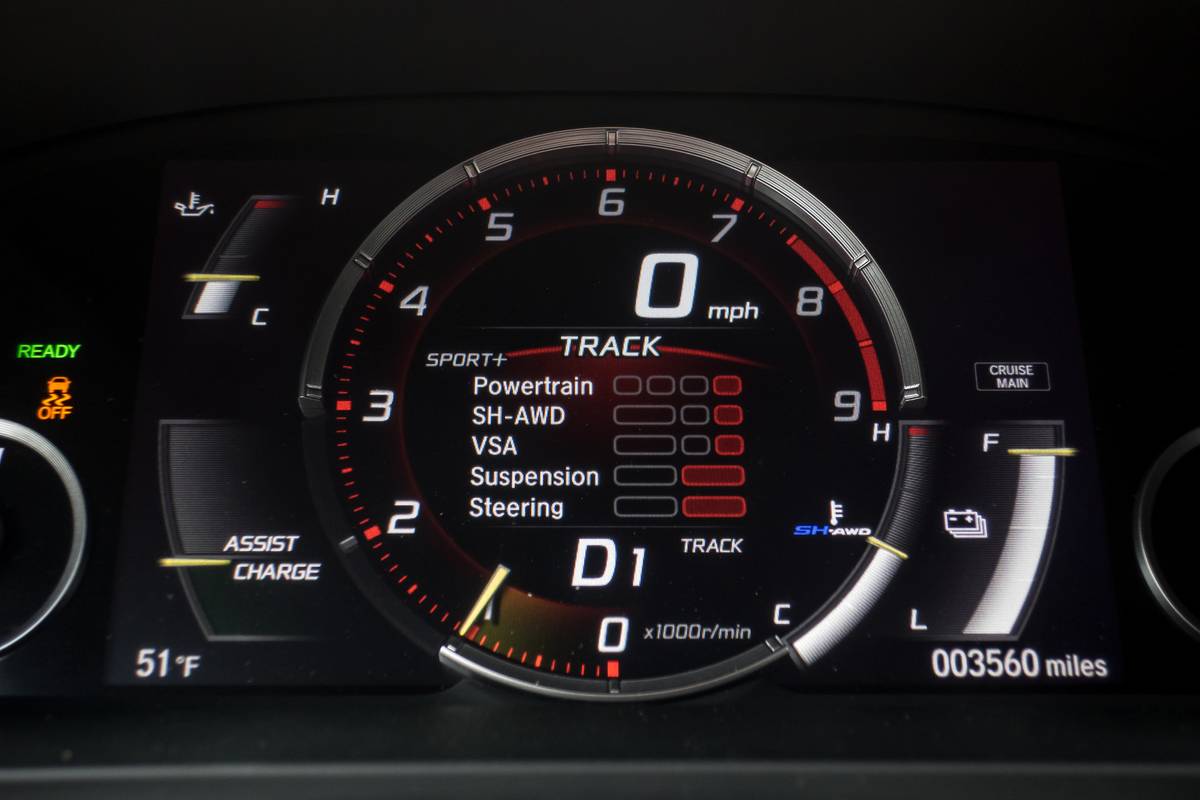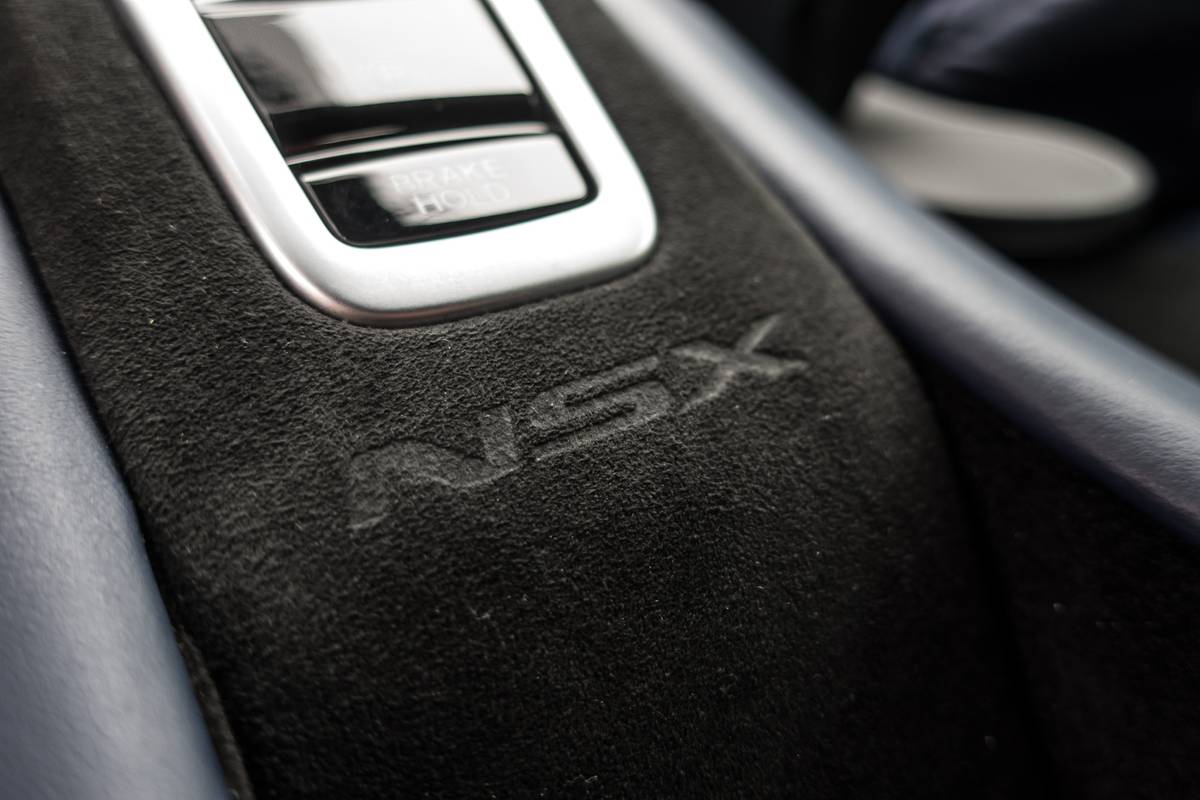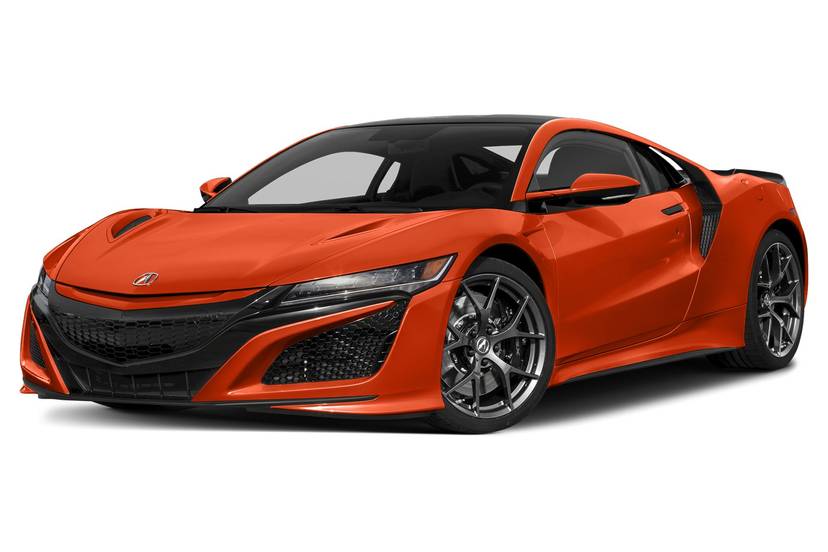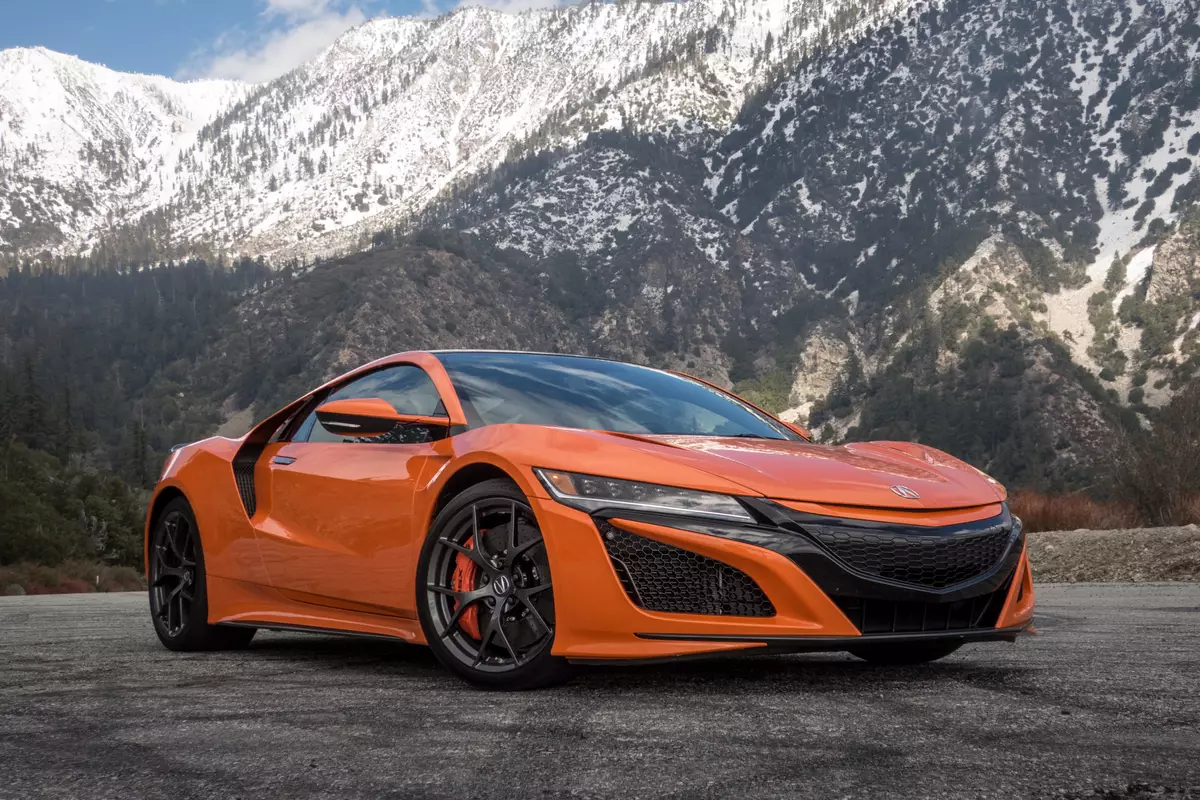
The 2019 Acura NSX might carry the same name and mid-engine layout of its predecessor, but its rebirth has spawned something entirely different. This is not a reproduction of the past, but a peek into the electrified future, right here in the present. Instead of one engine in the middle, the NSX has that plus three electric motors: one attached to the engine and a pair up front, one for each wheel. What makes the NSX unique among supercars (yes, I think it is one) is how it uses this system to its advantage — and it’s got nothing to do with fuel economy.
Related: 2019 Acura NSX: Supercar Shoppers Get a Bit More for Their $160K
For 2019, the NSX returns with a few tweaks that change up its appearance slightly, along with some performance-minded updates, as well. There was one change in particular that I found to pay immediate dividends: the tires. The NSX now wears Continental SportContact 6 rubber at all four corners, replacing SportContact 5s from 2018. The new tire has a different tread design and tire compound, which not only provides more grip but also helps to control one of the problems of the previous year’s vehicle: snap oversteer.
The updated car, the new tire and a few suspension changes — including added stiffness to the front and rear stabilizer bars, and stiffer rear toe-link bushings — attempt to curb this, and I think the changes were successful. It didn’t try to snap on me a single time, and you could predictably dial in a bit of oversteer with the throttle. The result is a superbly balanced car.
In my time with the NSX, I got to explore the car’s hybrid system in both everyday and performance settings. Here are three ways the NSX puts its hybrid system to good use:
1. In the Day-to-Day
The first thing I did after taking delivery of the NSX? Pick up a friend at the airport. There’s a wide swath of high-performance vehicles that are really good at going fast but pretty awful at going slow. The NSX avoids that distinction; it’s docile at low speeds and the suspension, while firm, doesn’t beat you up too badly.
The hybrid system helps with this. At low speeds, the engine cuts out and the car moves on electric power alone as long as you’re light with the throttle. In the car’s sportier drive settings, the engine stays on all the time, but if you just leave it in Quiet mode, it putts around like a normal hybrid most of the time — albeit one that seats you about a foot off the ground. The NSX is actually a pretty good day-to-day driver (minus the multimedia system) if you’re OK with getting stared at quite a bit because, even though the styling is a few years old, it still really stands out.
2. In the Bends
While the hybrid system does help with the car’s more mundane functions, its true purpose on the NSX is to enhance performance, and there are a few ways that it does this. The twin-turbo 3.5-liter V-6 makes 500 horsepower and 406 pounds-feet of torque, providing the bulk of the power (and it’s fantastic). But the hybrid system, with its electric-motor trio, is what makes the car feel truly unique.
The electric motor mounted next to the engine helps with charging the batteries and acceleration to the rear-wheels; it gives the NSX a pretty good kick at low rpm, which makes the car feel more responsive. Then the gas engine kicks in … and the world just kind of melts in front of you.
But what you notice more while cornering are the two motors found up front, which the car uses for an important task: torque vectoring. Using electric motors and the instant torque that they provide allows the car to precisely control how much power is going to each wheel, as well as when that power kicks in. The front motors each offer 36 horsepower and 54 pounds-feet of torque; total system output (including all of the motors and the engine) is capped at 573 hp and 476 pounds-feet of torque.
This level of dexterity gives the NSX a unique feel when cornering, different from other performance cars I’ve driven that also feature all-wheel drive (and different from other mid-engine cars, as well). As you push through a turn, it feels as though something is grabbing the outside of the front end and pulling it into the turn. What’s happening in real time is that the computers are reading the situation and deciding which front wheel has grip and needs power at that precise moment. Generally speaking, that’s more of the outside wheel than the inside one, as the car puts more weight down on that wheel while it turns.
This makes the car more forgiving and it also allows the driver to use the throttle some to aid steering. That adds more velocity to corner exits — and man, does this car love to add velocity.
3. In the Straights
In addition to the electronic wizardry in corners, the hybrid system also helps out with straight-line acceleration. Acceleration in the NSX feels instantaneous at a variety of speeds, from a stop to passing on the highway or trying to make a light: You push the pedal, and there zips the car. The transitions, as the car adds electric power to that of the engine, are perfectly seamless. Driving in Sport mode with the engine always on, you could be forgiven for forgetting that this is a hybrid. The NSX has serious speed.
The hybrid system also helps during launches. Launch control on the NSX is one of the easiest systems I’ve used. It’s basically a four-step process:
Step 1: Put the car in Track mode.
Step 2: Apply the brake.
Step 3: Mash the accelerator all the way down.
Step 4: Drop the brake.
If there’s a Step 5, it’s just watching the world explode in your face.
The system is easier on the drivetrain than other systems I’ve tested because, upon launch, the engine is only running at 2,200 rpm and the electric motors take care of the initial start of the vehicle’s momentum. For the first 0.15 second, the electric motors move the car entirely on their own, then the gas engine kicks in. The low-starting rpm and the electrical assist means you’re not putting a ton of stress on the gearbox or the clutches as the car snaps into gear. Acura quotes the zero-to-60-mph time as 2.9 seconds, which is absolutely insane — but after driving the car, I absolutely believe it.
The Price of Glory
The price you pay for all of this performance adds up almost as quickly. My test vehicle was $196,500 (including a destination charge) after a long list of added options, but what’s remarkable is that pretty much all of the options were not performance-focused and very cosmetic. The exception would be the carbon-ceramic brake rotors ($10,600), but other than that, if you opt for the base model, which starts at $159,300, you’ll be getting pretty much the exact same amount of performance and you don’t really need the carbon-ceramics unless you plan to really track the car hard.
I had an absolute blast in my few days with the 2019 Acura NSX. It not only offers high-performance potential (like most other sports cars in that price range), but it makes the experience accessible. The hybrid systems don’t just make the car faster, they make it safer, too. This is one of the easier cars out there to drive at high speeds because of its balance, grip and how it can put down power without causing drama.
Cars.com’s Editorial department is your source for automotive news and reviews. In line with Cars.com’s long-standing ethics policy, editors and reviewers don’t accept gifts or free trips from automakers. The Editorial department is independent of Cars.com’s advertising, sales and sponsored content departments.





















